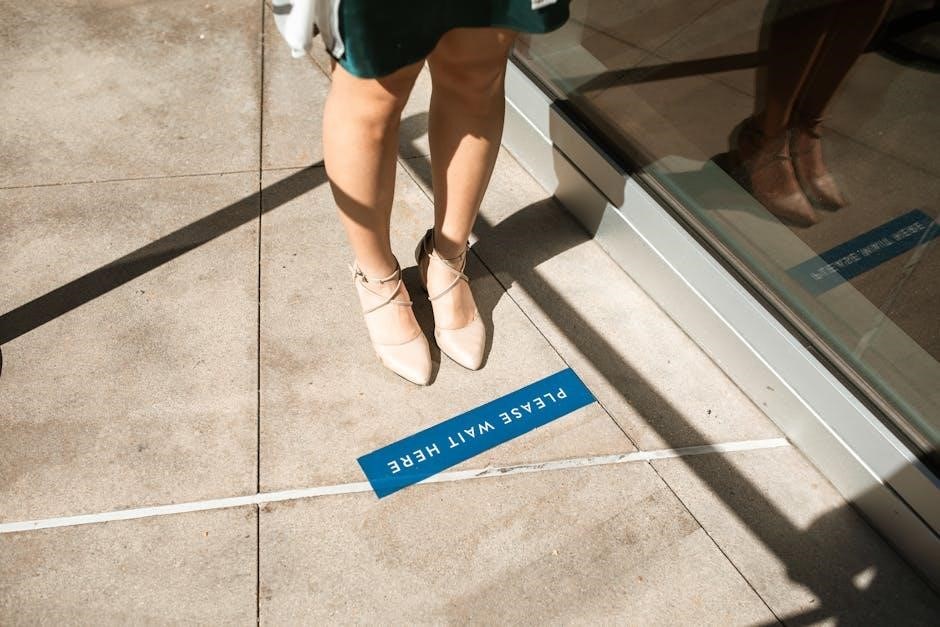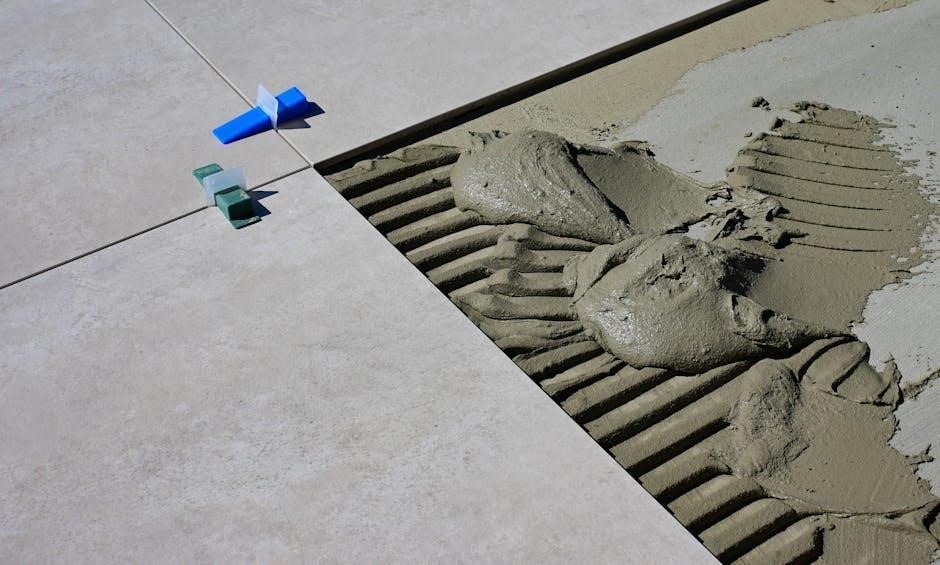henry 430 vct floor adhesive instructions
Henry 430 VCT Floor Adhesive is a premium, clear thin-spread adhesive designed for installing vinyl composition tiles (VCT) in residential and commercial settings. It offers a 24-hour working time, dries clear, and provides strong bonding strength, making it ideal for various flooring projects.

Product Overview
Henry 430 ClearPro is a premium, clear thin-spread adhesive designed for installing vinyl composition tiles (VCT) in residential and commercial settings. It offers a 24-hour working time, dries clear, and provides excellent initial grab and ultimate bond strength for durable flooring installations.
Description and Key Features of Henry 430 ClearPro Adhesive
Henry 430 ClearPro Adhesive is a premium, clear thin-spread adhesive specifically designed for installing vinyl composition tiles (VCT). It offers a 24-hour working time, allowing for extended flexibility during installation. The adhesive dries clear, ensuring a clean and professional finish. Key features include excellent initial grab and ultimate bond strength, making it ideal for both residential and commercial applications. It is suitable for use over various substrates, including concrete and plywood, provided proper surface preparation is done. The adhesive is formulated to provide a strong, durable bond that withstands heavy foot traffic. Additionally, it is compatible with asphalt tile installations, offering versatility for different flooring projects. Environmental considerations are also addressed, with recommendations for proper ventilation during application.

Installation Instructions
Henry 430 VCT Floor Adhesive is applied using a U-notch trowel, ensuring proper coverage for VCT tiles. It offers a 24-hour working time and dries clear.
Preparation Steps for VCT Flooring Installation
Proper preparation is essential for a successful VCT flooring installation. Ensure the substrate is clean, dry, and free of old adhesives or contaminants. Check for moisture levels, as high moisture can compromise the adhesive bond. The surface must be level and structurally sound. Allow the Henry 430 adhesive, flooring, and substrate to acclimate to room temperature (65°F or above) for at least 48 hours before installation. This ensures optimal bonding and performance. If necessary, apply a primer to non-porous surfaces to enhance adhesion. Proper preparation guarantees a strong, long-lasting bond between the VCT tiles and the substrate.
Application Process and Recommended Tools
Apply Henry 430 ClearPro Adhesive using a U-notched trowel with a 1/32″ deep, 1/16″ wide notch at a 5/64″ angle for optimal coverage. Spread the adhesive evenly, holding the trowel at a 45-degree angle. Work in small sections to maintain control. Use a clean, lint-free roller or brush to ensure smooth, uniform application. For larger areas, a notched squeegee may be effective. Avoid over-spreading to prevent adhesive excess. Allow the adhesive to set open for the recommended time before placing tiles. Use clean water and mild detergent for wet cleanup, and mineral spirits for dried adhesive. Always follow safety precautions and use protective gear like gloves and safety glasses.
Placing and Securing VCT Tiles
Press VCT tiles firmly into the Henry 430 ClearPro Adhesive, ensuring full contact and alignment with adjacent tiles. Use a rubber mallet or roller to secure tiles, eliminating air pockets. Align tiles carefully to maintain pattern consistency. Avoid excessive adhesive squeeze-out by lifting tiles slightly before final placement. Use spacers or guides to maintain even grout lines. Allow tiles to set undisturbed for the recommended time to ensure a strong bond. Avoid heavy foot traffic or moving tiles once placed, as this can disrupt adhesion. Proper placement and securing ensure a durable, long-lasting floor installation.
Environmental and Safety Considerations
The Henry 430 ClearPro Adhesive may temporarily impact indoor air quality during installation. Ensure good ventilation and avoid inhaling fumes. Use protective gear like gloves and safety glasses to prevent skin and eye contact.
Worksite Environment and Indoor Air Quality
The Henry 430 ClearPro Adhesive installation process may temporarily affect indoor air quality, releasing fumes that could cause irritation. Proper ventilation is essential to minimize exposure and maintain a safe working environment. Ensure the workspace is well-ventilated, and avoid prolonged inhalation of fumes. The adhesive should be applied in areas with adequate airflow to prevent the accumulation of volatile organic compounds (VOCs). Additionally, maintain a consistent temperature of at least 65°F (18°C) for 48 hours before, during, and after installation to optimize bonding and reduce potential environmental impacts. Always follow safety guidelines, including the use of protective gear like gloves and safety glasses, to ensure a safe and healthy work environment.
Safety Precautions and Handling Instructions
When working with Henry 430 ClearPro Adhesive, it is crucial to follow safety precautions to ensure a safe installation process. Avoid direct contact with skin and eyes, as the adhesive may cause irritation. Wear protective gloves, safety glasses, and a mask to minimize exposure. In case of skin contact, wash thoroughly with soap and water. If the adhesive gets into the eyes, flush with water for at least 15 minutes and seek medical attention if irritation persists. Proper ventilation is essential to prevent inhalation of fumes. Keep the adhesive away from open flames or sparks, as it is flammable. Follow all instructions on the product label and dispose of leftover materials according to local regulations. In case of emergencies, refer to the Safety Data Sheet for guidance.

Cleanup and Maintenance
For wet adhesive, use a clean, white cloth dampened with soapy water. For dried adhesive, use a cloth dampened with mineral spirits, following container warnings. Regular cleaning involves sweeping, vacuuming, and mopping with mild detergent to maintain appearance and longevity of the VCT flooring and adhesive bond.
Wet and Dried Adhesive Cleanup Methods
For effective cleanup of Henry 430 VCT Floor Adhesive, it is essential to handle wet and dried adhesive differently. Wet adhesive can be cleaned using a clean, white cloth dampened with soapy water. This method is ideal for removing fresh spills or excess adhesive from tools and surfaces. For dried adhesive, a clean, white cloth dampened with mineral spirits is recommended. Carefully follow the warnings and instructions on the mineral spirits container to ensure safe use. Regular maintenance involves sweeping, vacuuming, and mopping with mild detergent to maintain the appearance and longevity of the VCT flooring. Proper cleanup ensures a strong bond and prevents damage to the flooring material. Always wear safety gloves and goggles during cleanup to avoid skin and eye irritation. This ensures a safe and durable flooring installation. Regular maintenance also helps prevent dust and debris from affecting the adhesive bond over time.

Troubleshooting Common Issues
When working with Henry 430 VCT Floor Adhesive, common issues may arise that require attention. Insufficient bond strength can occur if the substrate is not properly prepared or if the adhesive is applied outside the recommended temperature range. To resolve this, ensure the surface is clean, dry, and primed, and apply the adhesive within the specified temperature range. If tiles lift or detach, check for uneven substrate surfaces or contamination during installation. Reapplying adhesive and pressing tiles firmly can address this issue. For adhesive drying too quickly, work in smaller sections and consider using a mist of clean water to maintain tackiness. Addressing these issues promptly ensures a secure and durable installation. Proper troubleshooting prevents costly rework and ensures long-lasting results. Always refer to the manufacturer’s guidelines for optimal outcomes.
Tools and Materials Needed
To ensure a successful installation of Henry 430 VCT Floor Adhesive, gather the necessary tools and materials. A notched trowel (1/32″ x 1/16″ x 5/64″) is essential for applying the adhesive evenly. A roller or J-roller helps press tiles firmly into place, ensuring proper bonding. For cutting tiles, use a utility knife or vinyl tile cutter. A chalk line and straightedge aid in aligning tiles accurately. Additionally, have clean cloths, soap and water, and mineral spirits on hand for cleanup. Safety gear like gloves and protective eyewear is crucial. Ensure the substrate is primed if necessary, and keep ventilation adequate to prevent fumes buildup. Having all tools and materials ready streamlines the installation process and ensures a professional finish.
Final Steps and Inspection
After installing the VCT tiles, allow the adhesive to cure fully, following the recommended 24-hour period. Conduct a thorough inspection to ensure all tiles are securely bonded and aligned properly. Check for any gaps or air bubbles, which can be addressed by applying additional pressure or reapplying adhesive if necessary. Once satisfied, seal the floor with a recommended floor sealer to protect the tiles and enhance durability. Finally, inspect the entire area to ensure no adhesive residue remains on the tiles or surrounding surfaces. Proper cleanup and final touches will result in a professional-looking, long-lasting VCT floor installation.
